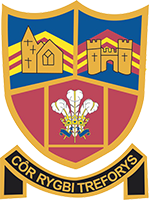Choir History
Morriston Rugby Club Male Voice Choir (Côr Rygbi Treforys) has a hard-earned reputation for a very high standard of performance. The Choir was formed in 1979 by twelve members of Morriston Rugby Club with the intention of forming a small social ensemble to sing while hosted by various rugby clubs after attending rugby internationals. It soon developed into a fundraising choir, entertaining in small venues for local charities and residential homes. As the years have passed the membership has increased to become the musical force it is today.
The primary aim of the Choir is the singing of traditional choral hymns associated with male voice choirs. Over time, this has developed into a broader repertoire of songs from West End musicals, operatic choruses, spirituals and much more.
The Choir is a registered charity and does not charge for its charitable performances, with the exception of sharing travel expenses when a coach journey is required, or covering accommodation costs if an overnight stay cannot be avoided. We also that our professional music staff fees are covered.
The popularity of the choir is reflected in the many invitations to perform at prestigious venues around the UK each year, including several appearances at massed choir concerts in the Royal Albert Hall. In 1999 the choir was involved with the Rugby World Cup, and was invited to perform at the opening and closing ceremonies at the Principality Stadium, Cardiff, and we also featured on the official CD of this event, singing the theme song "World In Union" with international artistes Bryn Terfel and Shirley Bassey. In January 2000, the Choir celebrated its 21st Anniversary with a gala concert at the Brangwyn Hall, Swansea, compered by Richard Baker. In July 2003, the Choir had the honour of being invited to perform in its own right at The Royal Albert Hall in a "Gala Evening" to celebrate the Diamond Jubilee of the Fire Services National Benevolent Fund, a wonderful and memorable experience for all those who took part. In 2016 the Choir won 1st Prize at the Aberteifi Eisteddfod.
The Choir has undertaken several tours to various European countries, with one of the most memorable representing Wales at the 10-day 2012 InterCeltique Festival in Lorient, Brittany, where Musical Director D. Huw Rees had the honour of conducting the massed participants (including many pipe bands) in each finalé of the five late-night stadium extravaganzas. The choirs most recent foreign tours were to the Mosel region of Germany in May 2016 (their first visit to that country), and to Flanders in 2017, where they sang at the nightly commemoration at the Menin Gate in Ypres, and in Lille Cathedral. Following the pandemic which curtailed so much of our movements, the choir returned to touring in 2023 with a short tour to Scotland.
The town of Morriston and still is a distinct and separate part of Swansea, with the iconic spire of Tabernacle Chapel as its focal point. This chapel, known as the "Cathedral to Welsh non-conformity", is also the venue for the Choir's annual concert each May, and for the recording of its CDs. The Choir over time now represents a much wider geographic area with choristers joining us from Pontardawe, Neath, Skewen, and many suburbs of Swansea. We are very much a community of the Swansea and Neath Port Talbot county areas.
The Choristers
The choristers span a broad range of ages from men in their 30’s to those in their 90’s, and from all walks of life. Our choristers represent all professions and occupations, but they all have one thing in common - their love of music and of singing. Our roster currently stands at 60+ but there is always room for more as we strive to return to the numbers we had pre-Covid 19. If you are thinking of joining us, please click on the ‘Join us’ tab on our home page to find out more.
The Uniform
When the Choir was first formed, the dress was navy sweaters and grey trousers, and this continued to be the uniform for several years until the choir went on their first visit to the Royal Albert Hall and found that they were the only choir on stage without blazers! It was later decided to purchase blazers, which then became the number one dress. In May 1999 the choir appeared on stage at their annual concert in dinner suits, and in 2012 they debuted their new Welsh Pride plaid waistcoats and ties at the Lorient InterCeltique Festival. Depending on the type of concert, venue, and weather, the dress is now chosen from these three formats.
The Choir Badge
Symbols on the Badge
1. St John's Church, 2. Castle Graig, 3. Link with Rugby.
The badge is almost identical to that of Morriston Rugby Club, which celebrated its 125th Anniversary in 2001; the only difference is that the words “Morriston RFC” have been replaced by “Côr Rygbi Treforys”. The symbols on the badge have strong connections with Morriston, because in 1726 a Shropshire man by the name of Robert Morris, an expert in copper smelting, bought a partnership in Llansamlet copper works at Landore, Swansea.
(1) In 1789 he endowed a temporary church on the site where St John's now stands. It is a focal point in Morriston as it stands in the middle of the main road and all traffic has to drive around it. In 1999/2000 The Church in Wales decided to close St John's because they could not afford the cost of its upkeep. The stained-glass windows were removed for safekeeping.
(2) Castle Graig (Morris Castle) was built around 1750, again by Robert Morris, to house the workers and their families. It is not a castle, but probably the first block of multi-storey flats ever built; an early 19th Century account states that 20 families lived there, and its ruins are still a landmark overlooking the town.
(3) The three feathers and rugby posts are the Welsh and rugby connections.







